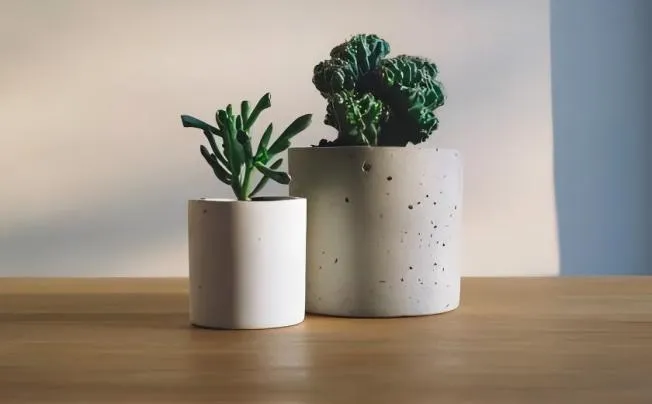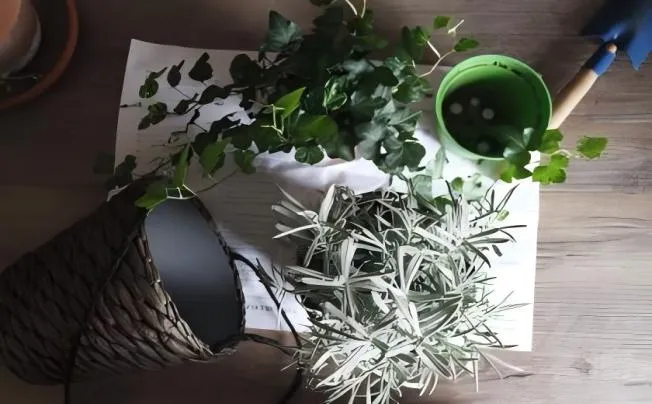Are Galvanized Flower Pots Good For Plants?
Are Galvanized Flower Pots Good For Plants? Next, let us delve deeper and uncover the mystery of the relationship between galvanized flower pots and plants.
Benefits of Galvanized Pots for Plants
1. Outstanding robustness
The exceptional durability of galvanized flower pots is one of their biggest benefits. Its zinc coating gives it a high level of resistance to corrosion and wear. Whether galvanized flower pots are used in the rainy season with prolonged rain or in the sweltering summer with high temperatures and intense UV radiation, they may be kept safe and sound. Galvanized flower pots in certain outdoor gardens can endure years or even decades of rain and wind without losing their structural integrity or aesthetic appeal. It has a definite economic advantage due to its long-term use feature. Even while a galvanized flower pot may cost a little more to buy once than a standard flower pot, gardeners end up saving a lot of money over time because they don't need to change their flower pots as frequently.
2. Effective water retention
The galvanised flower pot can efficiently reduce the pace at which water evaporates when the plants are being watered, allowing the soil's water content to remain more constant for an extended period of time. Without a doubt, this is the perfect growth environment for plants that require a lot of water.
They require regular watering to keep the soil moist, and like conventional daffodils, they have a very high water demand throughout the growth and flowering season. Daffodils' water needs can be satisfied by planting them in galvanised flower pots. Galvanised flower pots' excellent water retention makes it difficult for the soil to dry up rapidly, which lessens the need for frequent watering. In addition, it can maintain the roots of daffodils in a comparatively wet environment, which promotes their growth and development and results in longer-flowering, fuller flowers.
3. Unique aesthetics
The galvanised flower pot's silver appearance is atmospheric and simple, with few intricate decorations, but it can display a modern and simple beauty. This style makes it very versatile; whether it is placed in a living room with a modern and simple design, paired with a simple white sofa and wooden coffee table, or in a courtyard garden with a natural atmosphere, it can blend in perfectly with the surrounding green trees and flowers. Additionally, the metal texture of the galvanised flower pot can add a sense of refinement and texture to the entire space, making it a highlight in home and garden decoration.

Possible problems with galvanized flower pots
Possible dangers of zinc
An excessive amount of zinc in the soil will hurt plants in several ways. According to the theory of plant nutrient absorption, different ions will have a competitive interaction when nutrients are absorbed by plant roots. Overabundance of zinc ions will clog plant roots' absorption channels, making it more difficult for plants to absorb other vital minerals like iron, manganese, and copper. Long-term exposure to high zinc levels will cause plants to grow much more slowly, become shorter, have weak, slender stems, hinder the development of flowers and fruits, and provide much lower yields and lower quality.
Low permeability of air
Natural clay is used to make clay flower pots, and the material is porous. Air can readily move between the soil and the outside world thanks to these microscopic pores, which function similarly to innumerable tiny channels. Since the galvanized flower pot's metal is somewhat solid and nearly devoid of pore structure, air finds it challenging to permeate the soil. Carbon dioxide must be released and oxygen must be consumed for plant roots to respire. The soil's oxygen content will progressively drop and carbon dioxide will keep building up if the flower container has inadequate air permeability. Long-term exposure to an oxygen-deficient environment will limit the root system's respiration, which will impair its ability to perform its regular physiological functions. It will be difficult for the root system to efficiently absorb water and nutrients if it is unable to breathe, which will lead to poor development and slow plant growth. The root may even rot in extreme circumstances.
Some practical steps can be done to address the issue of galvanized flower pots' limited air permeability. It is ideal to utilize soil that has good air permeability, such as soil that contains a specific ratio of leaf humus, perlite, and vermiculite. Rich in humus, leaf humus can offer a wealth of nutrients. Additionally, its loose structure promotes air circulation; the light and porous nature of vermiculite and perlite can improve the soil's drainage and air permeability. To prevent water buildup and soil hypoxia, additional drainage holes can be put to the flower pot's bottom to enable the rapid release of extra water. Regularly loosening the soil during the planting process can help improve the soil's air permeability and break up compaction.

Tips for the correct use of galvanized flower pots
(I) Pick the appropriate plants
Succulents are an excellent option. The majority of succulent plants are indigenous to arid or semi-arid regions and are very resistant to drought. They may adapt to arid conditions by storing a lot of water in their leaves or stems. Succulents won't experience severe water issues because to the excellent water retention of galvanised flower pots, but they can somewhat satisfy their basic water requirements. Succulents also require comparatively less soil air permeability. The growth of succulents won't be significantly hampered by the galvanised flower pots' poor air permeability.
Another kind of plant that works well in galvanised flower pots is aquatic. A layer of stones or ceramsite can be placed on the bottom of the pot when planting aquatic plants in galvanized flower pots. This will not only fix the plants but also improve air permeability.
(II) Crucial elements for matching soil
First and foremost, the soil type that works best for galvanized flower pots needs to be loose and well-drained. While proper drainage can avoid soil waterlogging and lower the danger of root rot, loose soil enables plant roots to spread out and grow more readily.
Other materials can be added to the soil to make it even better. For instance, the soil can be supplemented with a suitable quantity of organic fertilizer, such as decomposed sheep and chicken dung. In addition to giving plants a range of minerals like potassium, phosphorus, and nitrogen, organic fertilizer can help strengthen the soil's structure and improve its capacity to hold onto water and fertilizer. It's also a smart idea to include some microbial agents.
(III) Precautions for daily maintenance Watering frequency should be adjusted based on the growth habits and seasonal changes of various plants. In general, spring and autumn are the times when plants grow the most, so the number of waterings can be appropriately increased. However, it is also important to avoid overwatering; it is best to water thoroughly each time, meaning that a small amount of water should be visible flowing out of the flowerpot's bottom.
One should not overlook the important aspects of fertilisation. The fertilizer requirements of various plants vary. When fertilizing, select the right fertiliser based on the plant's kind and stage of growth. In general, nitrogen fertilizer should be used as the primary fertilizer to encourage the growth of plant stems and leaves throughout the early stages of plant development. To encourage plant flower bud differentiation, blooming, and fruiting, progressively increase the percentage of phosphorus and potassium fertilizers as the plant grows. You can prolong the flowering period and make the blooms more colourful by irrigating the roots once, spraying the leaves once every one to two weeks, or applying phosphorus and potassium fertilizers, such as potassium dihydrogen phosphate solution, prior to the flowering season.
You must routinely assess the plants' growing state as part of your daily upkeep. Examine the plants' leaves for signs of illness, insect pests, yellowing, and withering. If it is discovered that the leaves are becoming yellow, it could be due to a variety of factors, such as inadequate fertilizer, water, or soil pH. It is important to identify the problem as soon as possible and take appropriate action. Take prompt preventive action if illnesses and insect pests are the cause. In order to maintain a clean and orderly environment surrounding the flower pots and provide a favourable growing environment for plants, weeds and other rubbish should be removed on a regular basis.

Selected Blogs
-
What customization services are available for metalworking customization?
2024-12-12
-
What Is The Difference Between A Plant Container And A Raised Bed?
2024-04-23
-
Garden Screening & Fence Panels
2024-04-23
-
Gardening pot selection tips
2024-04-17
-
The function and collocation of horticultural fire pot
2024-04-17


